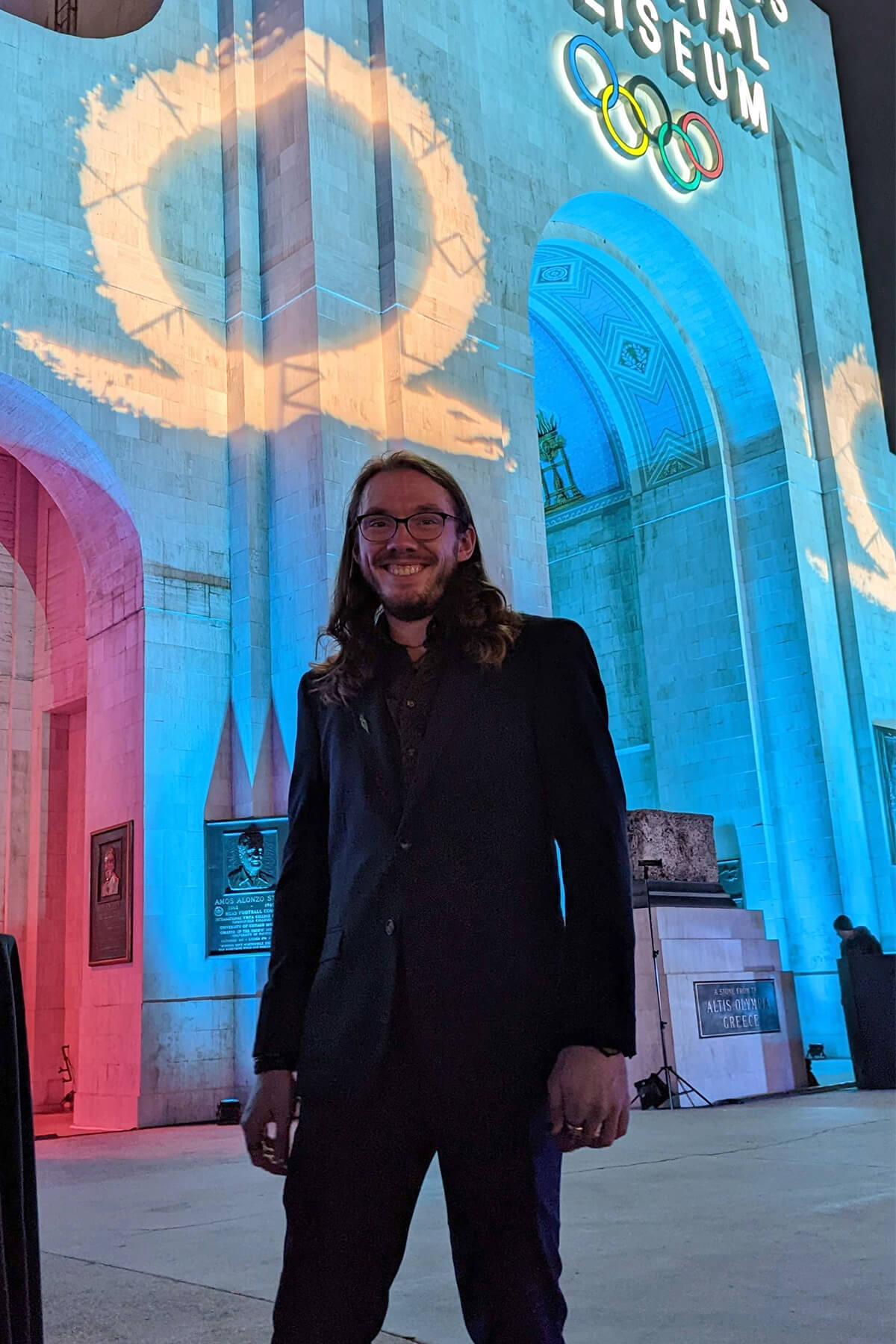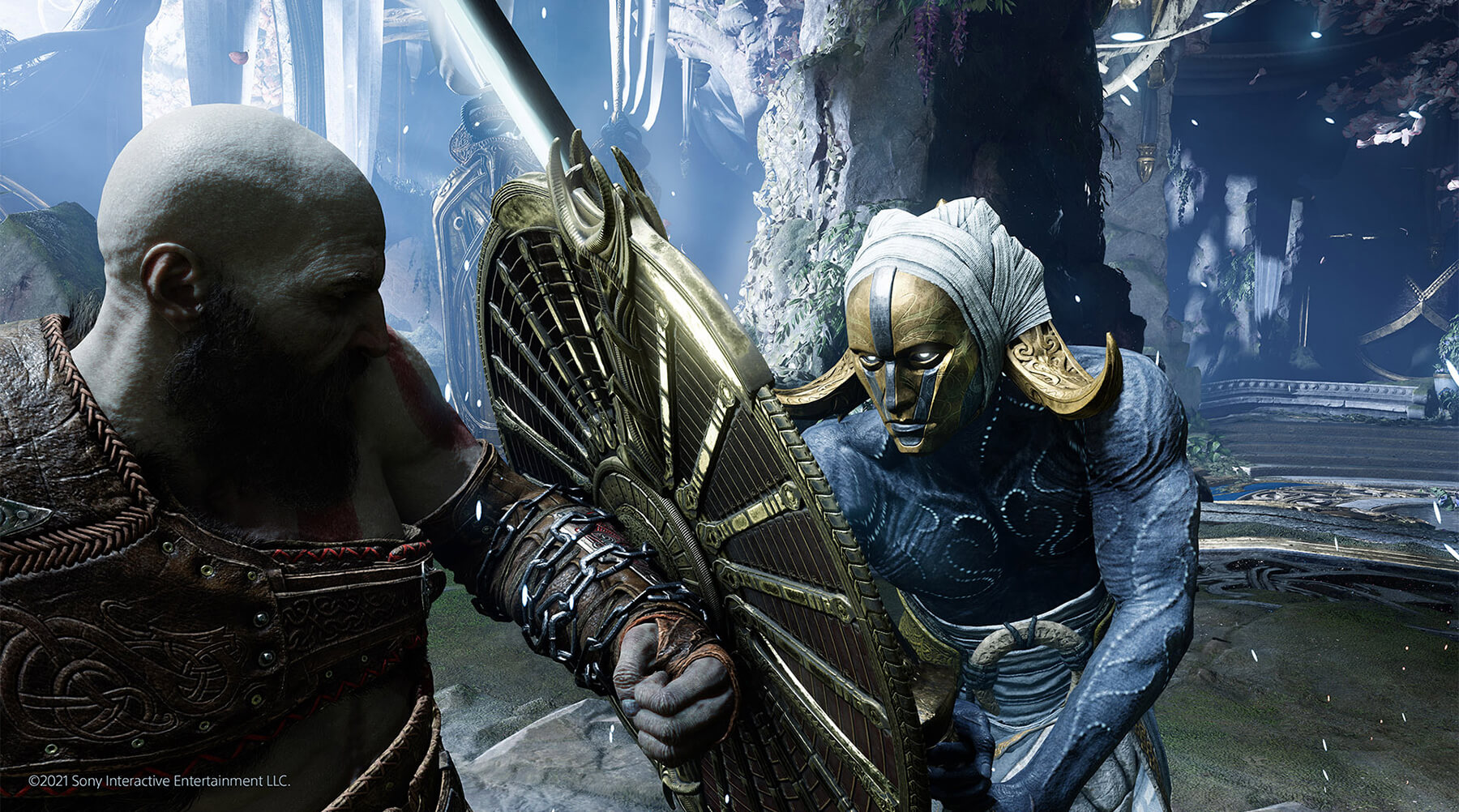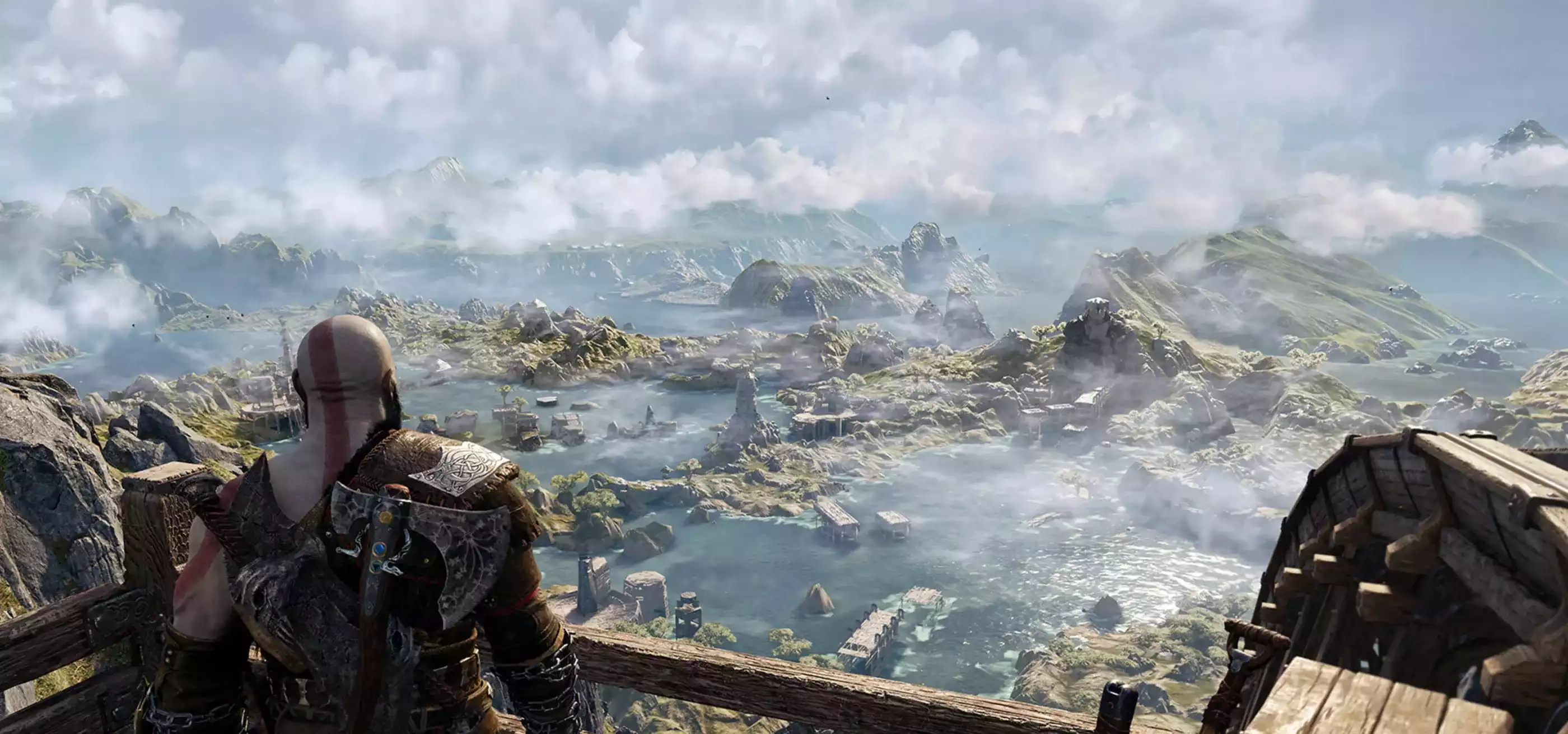Josh Hammond had been a fan of the God of War series’ action-packed, mythical mayhem since its debut on the PlayStation 2. But that fandom reached a new level just before his senior year at DigiPen with the release of 2018’s God of War. It was a landmark game that saw longstanding series protagonist Kratos, the former Spartan warrior who had defied the Greek pantheon, reemerge as a newly widowed father in the Norse realm of Midgard. “It was such an incredible experience that was masterfully crafted. I was just left in awe,” Hammond says.
A few months before his graduation in 2019, Santa Monica Studio left Hammond in awe yet again, informing him he’d landed a technical design internship working on the direct sequel to God of War. “I was incredibly excited,” Hammond says. “I knew Santa Monica Studio was something really special, and to be able to join the team and help bring God of War Ragnarök to life is a moment I won’t soon forget.” That internship eventually turned into a full-time technical designer position, a role in which Hammond has spent nearly four years helping God of War Ragnarök become the fastest-selling first-party game in PlayStation history.

God of War Ragnarök finds its epic cast of gods and goddesses wrestling with the concept of fate, questioning whether or not one can truly change it. During his DigiPen journey, Hammond’s own answer to that question was a resounding yes. “I had started out at DigiPen in the [BS in Computer Science in Real-Time Interactive Simulation] but very quickly became interested in the game design courses,” Hammond says. Sophomore year, he switched to the hybrid BS in Computer Science and Game Design program, which allowed him to pursue his interest in the technical side of development while simultaneously exploring design. “After a year of that and figuring out where my passions and interests truly were, I changed degrees again over to the BA in Game Design to fully commit to design,” Hammond says.
Far from angering the fates, Hammond’s two years of studying math and computer science in his prior degree programs actually ended up informing his enthusiasm for technical design, a game design discipline that acts as a bridge between designers and programmers. “That’s what I found myself doing in a lot of my junior and senior game projects, tackling a lot of the complicated systems, mechanics, and scripted sequences,” Hammond says. Those game project experiences translated directly to his work at Santa Monica Studio, where Hammond now tackles much of those same technical design challenges on a much bigger scale.
Indeed, Hammond’s technical design role on God of War Ragnarök involved wrangling a list of features as large as the giants of Jötunheim — spanning puzzles, set pieces, level mechanics, narrative, and gameplay systems, often all within the same game area. “I think I worked with almost every department at Santa Monica Studio in some capacity to bring content to life!” Hammond says. One in-game area Hammond devoted much of his time to was the mythical realm of Alfheim, home of the warring light and dark elves. “There are some puzzles in there that needed a lot of fine tuning to get right,” Hammond says. “I spent countless hours on call with level design iterating, coming up with creative solutions, and trying out different setups for larger puzzles. I honestly loved those calls. It was incredibly rewarding working with them.”

God of War Ragnarök’s continuous, one-shot camera approach meant the game’s many narrative moments needed to blend seamlessly with its levels and puzzles too, something Hammond also helped implement. “Using Alfheim as an example, there’s a moment where Kratos and another character push over a couple of statues to make a bridge, or when a bridge collapses,” Hammond says. As effortless as these moments look and feel in the game, they required lots of collaboration between the technical design, gameplay animation, level design, and narrative design teams to pull off. “They were probably some of the most rewarding things for me to work on,” Hammond says. “Just being able to work with so many different people and teams was amazing and so much fun.”
Seeing my name in the credits at the end, it was a childhood dream come true.
So far, those amazing development experiences have translated into equally amazing gameplay experiences for fans and critics alike. Since its November 2022 release, God of War Ragnarök has earned a rare perfect 10 on IGN and a 94 average on review aggregator Metacritic, making it one of the best reviewed PS5 games in the console’s entire library. Recalling the day when that avalanche of good reviews first published online, Hammond says it’s a moment that will always stay in his memory. “It was overwhelming. So many feelings washed over us. To be able to deliver on the fans’ expectations and make something special that people are connecting with, it’s a feeling I won’t soon forget,” Hammond says. “I for sure shed a couple of happy tears that day. Even just seeing my name in the credits at the end, it was a childhood dream come true.”
Hammond credits DigiPen for teaching him many of the skills and lessons he needed to make that dream come true — lessons he employs daily at Santa Monica Studio like respectful (and frequent) communication with teammates, constructive feedback, and sharing one’s expertise with others. But one of his biggest takeaways from DigiPen is a message Kratos himself imparts to his son in God of War Ragnarök. “Forge your own path,” Hammond says. “Take advantage of independent studies and go beyond what you’re taught in the classroom. Really research your craft and your interests. Have a personal goal in mind for each project you make that will advance your skills and understanding of a concept. All of these things will help you develop and give you a deeper understanding of your field.”
